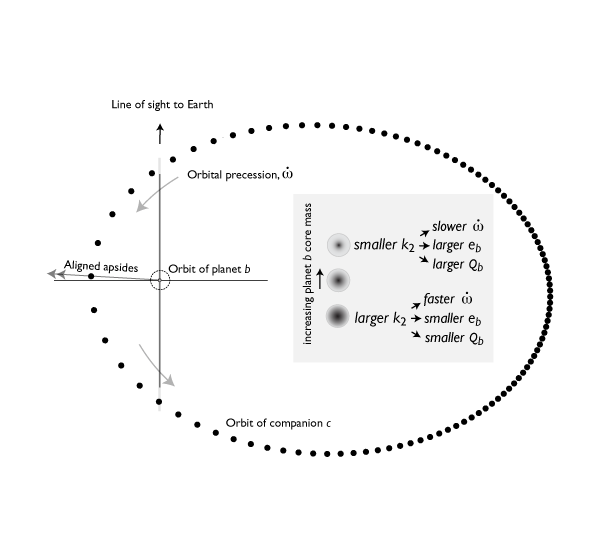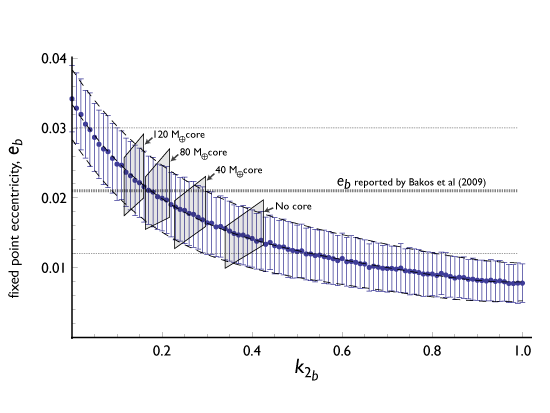
Image Source.
Cranking out a paper invariably takes longer than one expects. Last week, I was confident that Konstantin and Peter and I would have our HAT-P-13 paper out in “a day or so”, and then it ended up taking the whole week. As of ten minutes ago, however, it’s been shipped off to the Astrophysical Journal Letters. It’s also been submitted to astro-ph, hopefully in time to make tomorrow’s mailing.
In the meantime, here’s a link to (1) the .pdf of our text, and (2) the two figures (one, two) both in .gif format. The two figures are 800 pixels across, all the better for dropping in to presentations.
Put briefly, HAT-P-13 is an absolutely remarkable set-up. The presence of the outer perturbing body in its well-defined orbit allowed us to show that the system has undergone long-term evolution to a “tidal fixed point”. In this state of affairs, secular variations in the orbital elements of the two planets have been damped out by tidal dissipation, the apsidal lines of the orbits have been brought into alignment, and most importantly, the two orbits precess at the same rate. The paper shows how the eccentricity of the inner planet is a sensitive function of the planet’s interior structure, and in particular, the degree of central concentration (parameterized by the “Tidal Love Number”, k_2).
Here’s a schematic that shows what’s going on:

Right now, the eccentricity of the inner planet is determined to rather modest precision e=0.021 +/- 0.009. The system is transiting, however, and so when Warm Spitzer measures the secondary eclipse time, the error on the eccentricity measurement will drop dramatically. The situation will also benefit from an improved measurement of the planet’s radius. When improved measurements come in, it’ll be possible to literally read off the planet’s core mass and, in addition, the value of the much-discussed tidal quality factor Q.


This is really neat. Incredible that we may end up with better tidal parameters for an extrasolar planet than the ones for the giant planets in our own system.